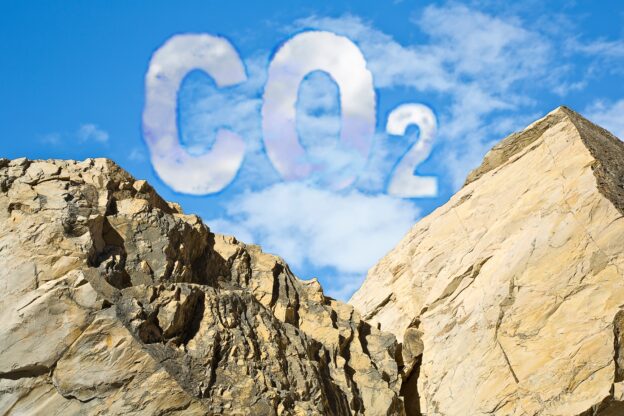Inspenet, October 9, 2023.
A study carried out by the University of Oxford in the United Kingdom has challenged the belief that natural rock erosion acts as a sink for CO 2 and instead suggests that it may also function as a significant source of CO 2 emissions. gas. The results of this research, published in the journal Nature , could have important implications for the management of climate change.
For the first time, scientific research has revealed the existence of a natural phenomenon in which rocks emit CO 2 into the atmosphere. What is even more surprising is that scientists have discovered that this emission is as considerable as that released by volcanoes around the world. Until now, due to the novelty of this discovery, most models examining the natural carbon cycle have not taken this process into account.
CO2-emitting rocks: How is it possible?
The process takes place when rocks that originated from ancient seabeds are pushed toward the Earth’s surface, for example, during the formation of mountain ranges such as the Himalayas or the Andes. This process exposes the organic carbon contained in the rocks to the oxygen present in the air and water, which can cause reactions that result in the emission of CO 2 . This implies that, rather than acting as a sink for CO 2 , eroded rocks could be a source of this gas, which contrasts with the previous belief that rocks capture it.
Until now, measuring the release of CO 2 from the erosion of organic carbon in rocks has been difficult. However, in the new study, the researchers used a tracer element, rhenium, which is released into water when organic carbon in rocks reacts with oxygen. The analysis of the rhenium content in river water made it possible to quantify the CO 2 emission. Despite this, the study’s authors acknowledge that it would be a considerable challenge to sample water from all the world’s rivers to obtain an accurate global estimate.
To extend this approach and apply it globally, scientists carried out two actions. First, they evaluated the amount of organic carbon present in rocks close to the surface. Secondly, they analyzed the areas most prone to erosion, especially those that are mountainous and steep.
Professor Jesse Zondervan, who led the research at the University of Oxford’s Department of Earth Sciences, commented: “The challenge was how to combine these global maps with river data, taking into account the uncertainties. We fed all our data to a supercomputer at Oxford, simulating the complex interplay of physical, chemical and hydrological processes. By piecing together this vast planetary puzzle, we were finally able to estimate the total carbon dioxide emitted as these rocks erode and send their ancient carbon into the air.“.
This could be contrasted with the amount of CO 2 that could be released through the natural erosion of silicate minerals present in rocks. The findings pinpointed numerous large regions in which weathering became a source of CO 2 , challenging current thinking about the impact of weathering on the carbon cycle.
Mountains that generate CO 2 emissions
The critical places where the release of CO 2 occurs are, according to the conclusions obtained, in mountain systems characterized by high rates of ascent that expose sedimentary rocks. Examples of these places include the eastern Himalayas, the Rocky Mountains, and the Andes. It was determined that the global CO 2 emission due to the erosion of organic carbon contained in rocks amounts to a total of 68 megatons of carbon per year.
The study, which is still ongoing, is investigating how changes in erosion, as a result of human activities, and increased rock temperatures due to human-induced climate changes, could intensify this natural emission. carbon. One question the team is currently asking is whether this natural release of CO 2 will increase in the next century.
Source: https://amp.elperiodico.com/es/medio-ambiente/20231008/descubren-rocas-montanas-emiten-co2-93082552

